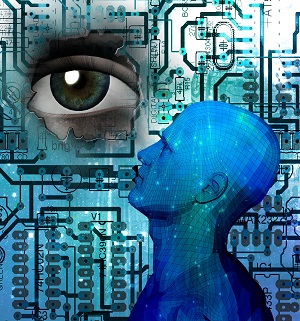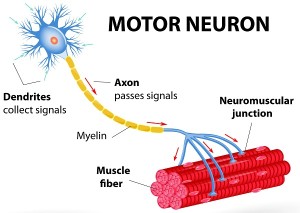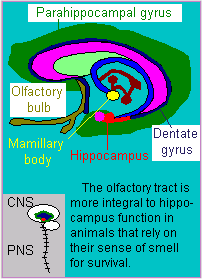17 Aug Stimuli
 Responses to Stimuli
Responses to Stimuli
When we speak of computational systems, we use words like “input” and “output” and “program“. When computers become able to communicate, understand and process knowledge in context, will we use different words: words that are more anthropomorphic? I’ve been playing with anthropomorphic concepts with MIPUS. In today’s post I will draw us a step closer to the concept of whole-self cognition in which thought and comprehension arise from phenomena occurring throughout the human body. We respond to some types of input, whether tactile, verbal, textual, visual or otherwise, with many different parts of our body. Besides responding to cold and hot weather, our skin may reflexively develop “goose bumps” or perspire profusely as a result of fright or anticipation. Our cardiovascular rate may be affected by the image or voice of a lover. Certain words describing favored foods may spontaneously activate our salivary glands. In other words, the input may be said to cue our responses.
| Understanding Context Cross-Reference |
|---|
| Click on these Links to other posts and glossary/bibliography references |
|
|
|
| Prior Post | Next Post |
| MIPUS and Association Neurons | Neuromorphic Computing |
| Definitions | References |
| input | Winnie the Pooh |
| response | Moby Dick |
| cognition | Miller 1976 |

The roles of the endocrine system, cardiovascular system, the peripheral nervous system, and, in fact, the entire body, in the processes of cognition and recognition cannot be excluded from consideration. Neural models that do not include some accommodation or explanation for things associated with the brain‘s environment may not be able to simulate complex cognitive activities. In upcoming posts on psychological factors in neural modeling, some discussion of the importance of self and introspection is to be presented. We will also see how MIPUS the household robot needs to have some concept of self in order to achieve his designated tasks. The parasympathetic nervous system, part of the autonomic nervous system, links each of the body systems and organs with the brain. Feedback from the body is interpreted and activates involuntary responses such as a change in the chemical balance. When feedback is unusually intense, it may attract our attention and prompt a reflex action or even a voluntary reaction. The amygdala is the link between the heart and the mind.
Paying it Forward
 I will, naturally, focus my analysis on the brain rather than the liver. But there are neurons throughout the body. Consider the role of motor neurons in the aforementioned reflex action. Incoming stimuli from our five senses and from internal sources (proprioception and kinesthesia) are converted to electrical signals. Not unlike robots, we run on electricity. Before the electricity is done zooming around inside us, recognizing stimuli, prompting choate thoughts, possibly feeding decisions, it has more than likely touched our muscle fibers and made us move. Again, it is not the purpose of my blog to enumerate all neuron functions, but it is important to note that the same synaptic processes that send electrical signals to our muscles are exchanging electrical signals in our frontal cortex, and elsewhere, to help us decide when and where to move.
I will, naturally, focus my analysis on the brain rather than the liver. But there are neurons throughout the body. Consider the role of motor neurons in the aforementioned reflex action. Incoming stimuli from our five senses and from internal sources (proprioception and kinesthesia) are converted to electrical signals. Not unlike robots, we run on electricity. Before the electricity is done zooming around inside us, recognizing stimuli, prompting choate thoughts, possibly feeding decisions, it has more than likely touched our muscle fibers and made us move. Again, it is not the purpose of my blog to enumerate all neuron functions, but it is important to note that the same synaptic processes that send electrical signals to our muscles are exchanging electrical signals in our frontal cortex, and elsewhere, to help us decide when and where to move.
Survival
 Winnie the Pooh was often quoted as saying “think, think. think” as he went about his day-to-day routine. Consider the contrast with Captain Ahab from Moby Dick. His associates were known to say accusingly that all he ever did was “feel, feel, feel.” Of the two fictional characters, who had better survival skills? Terms like paleo-cortex (ancient part of brain) refer to structures that are present in animals as well as in humans. The presence of these structures, and their known roles in animals’ survival instincts, suggests these parts existed in prehuman ancestors of humans. The ability to feel is a fundamental piece of these “older” parts of the brain. Besides the thinking we do when we perceive things, we feel.
Winnie the Pooh was often quoted as saying “think, think. think” as he went about his day-to-day routine. Consider the contrast with Captain Ahab from Moby Dick. His associates were known to say accusingly that all he ever did was “feel, feel, feel.” Of the two fictional characters, who had better survival skills? Terms like paleo-cortex (ancient part of brain) refer to structures that are present in animals as well as in humans. The presence of these structures, and their known roles in animals’ survival instincts, suggests these parts existed in prehuman ancestors of humans. The ability to feel is a fundamental piece of these “older” parts of the brain. Besides the thinking we do when we perceive things, we feel.
This combination of logical and emotional responses is characteristic of human cognition. In animals, the emotional or instinctive side of brain activity is probably stronger because it is inextricably linked to their survival. Some of my recent posts look at the physical mechanisms (hardware) of emotions, building a foundation for our discussion of the psychology (software) of cognition in posts to come. This information will also be important in the process and knowledge design assumptions, when we attempt to build models for robust cybernetic applications. Really soon I will post to introduce an essential link between the hardware and software of cognition that is often ignored in cybernetic modeling.
| Click below to look in each Understanding Context section |
|---|









